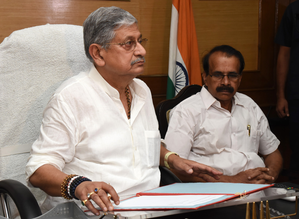New Delhi: Around 12.52 lakh women dairy farmers have been covered under the Dairy Processing and Infrastructure Development Fund (DIDF) out of a total of 42.48 lakh producer members, with significant participation of 30 per cent, Union Minister for Animal Husbandry & Dairying, Rajiv Ranjan Singh told the Rajya Sabha on Wednesday.
DIDF is an infrastructure development scheme, aimed to modernise milk processing and chilling plants, as well as enhance value addition. The DIDF scheme thereby, aims to benefit milk producers, providing them with an organised market for their produce and employment opportunities in the project areas.
The DIDF scheme has been merged into the Animal Husbandry Infrastructure Development Fund (AHIDF), and its implementation has been extended for the next two years (2024-2026) with an outlay of Rs 29,110.25 crore.
“The indirect benefits to milk producers continue, and now women have the opportunity to establish a dairy industry as individual entrepreneurs under AHIDF. As on date, AHIDF provided assistance to 6 women as individual entrepreneurs, besides the scheme creates an ecosystem for dairy farmers including women to benefits from the other dairy projects (157) financed under AHIDF,” Rajiv Ranjan Singh said
In a written reply to another question, the Union Minister said the Department of Animal Husbandry and Dairying under the National Action Plan had a provision for Assistance to States for Control of Animal Disease (ASCAD), farmers/poultry owners are compensated for the culling of birds as per approved rates based on the demand and action plan of the state/UT with funding pattern of 50:50 between the Centre and state.
The states/union territories are also financially supported for ‘Control of Emergent and Exotic Diseases’, strengthening of state biological production units and Disease Diagnostic Laboratories including Research & Innovation with Central-State fund sharing pattern.
Moreover, the laboratory support is provided to states/UTs by Regional Disease Diagnostic Laboratories (RDDLs), Central Disease Diagnosis Laboratory and National Institute of High-Security Animal Diseases, Rajiv Ranjan Singh said.
–IANS


Comments are closed.